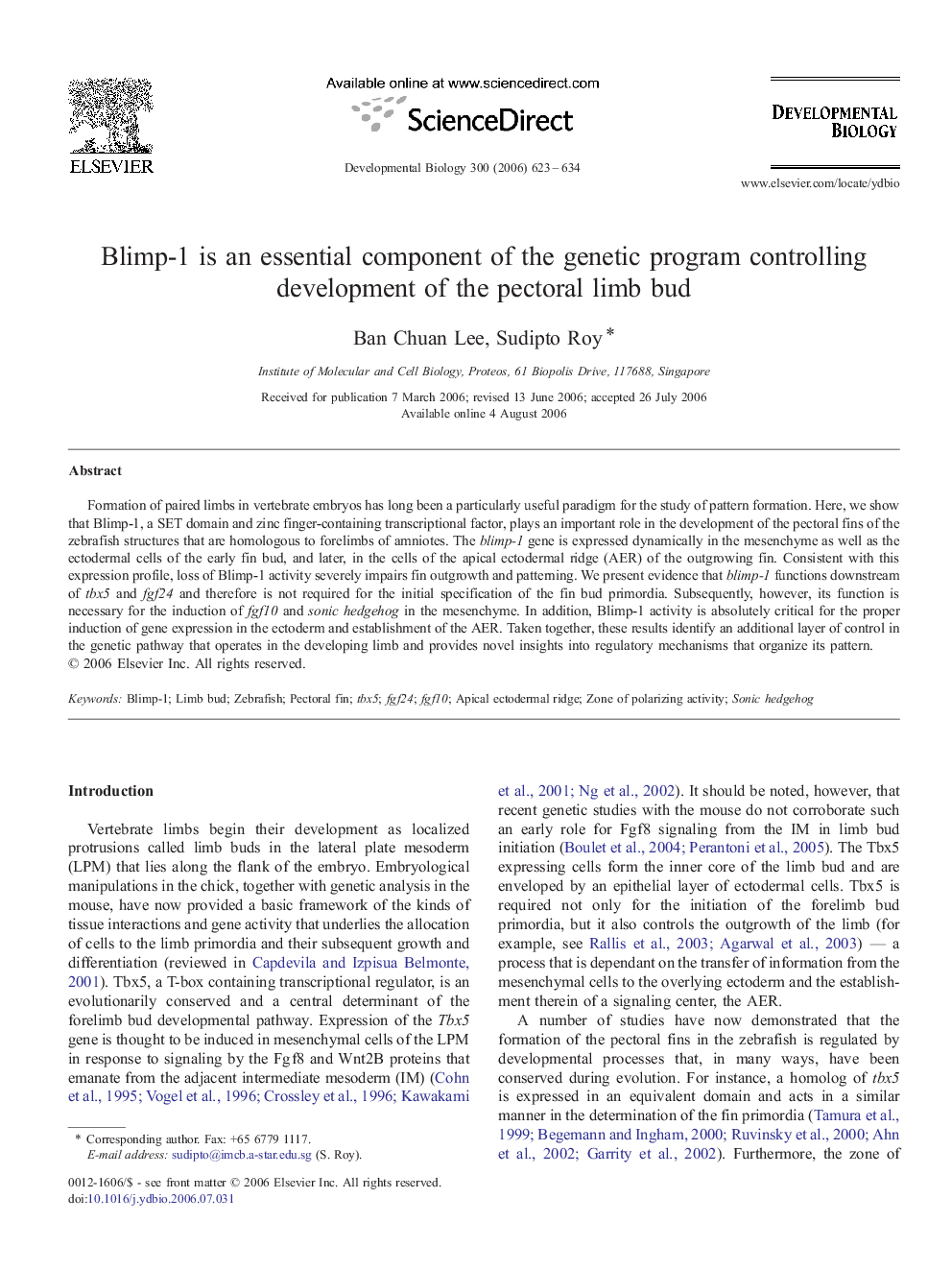| Article ID | Journal | Published Year | Pages | File Type |
|---|---|---|---|---|
| 2175563 | Developmental Biology | 2006 | 12 Pages |
Abstract
Formation of paired limbs in vertebrate embryos has long been a particularly useful paradigm for the study of pattern formation. Here, we show that Blimp-1, a SET domain and zinc finger-containing transcriptional factor, plays an important role in the development of the pectoral fins of the zebrafish structures that are homologous to forelimbs of amniotes. The blimp-1 gene is expressed dynamically in the mesenchyme as well as the ectodermal cells of the early fin bud, and later, in the cells of the apical ectodermal ridge (AER) of the outgrowing fin. Consistent with this expression profile, loss of Blimp-1 activity severely impairs fin outgrowth and patterning. We present evidence that blimp-1 functions downstream of tbx5 and fgf24 and therefore is not required for the initial specification of the fin bud primordia. Subsequently, however, its function is necessary for the induction of fgf10 and sonic hedgehog in the mesenchyme. In addition, Blimp-1 activity is absolutely critical for the proper induction of gene expression in the ectoderm and establishment of the AER. Taken together, these results identify an additional layer of control in the genetic pathway that operates in the developing limb and provides novel insights into regulatory mechanisms that organize its pattern.
Keywords
Related Topics
Life Sciences
Biochemistry, Genetics and Molecular Biology
Cell Biology
Authors
Ban Chuan Lee, Sudipto Roy,
